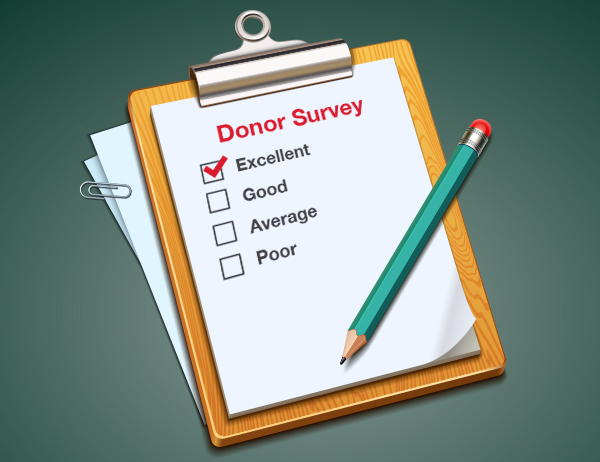Nonprofit stakeholders are vital to the development of a sustainable and profitable fundraising event. As an event organizer, they are an invaluable resource as you seek to improve your event and reach ever-higher fundraising goals and expectations. Surprisingly, despite the value of stakeholder input, many nonprofits overlook the simple act of gathering feedback and using it in their planning of future events.
But first, who are stakeholders? Stakeholders are any individual or group of people who have a vested interest in the success of your nonprofit in fulfilling its objective. This includes any affected person or entity who doesn’t necessarily serve a specific role within your organization, including individual donors, event patrons, business services, volunteers and even the beneficiaries you serve as part of your mission.
When was the last time you reached outside your organization for feedback to help you improve your event? If you are guilty of avoiding the steps necessary to engage your stakeholders and actively seek their input, it’s time to put a plan into place to involve them in shaping your next fundraising event.
The payoff will be greater excitement in the weeks leading up to your event and a resulting boost in participation. Longer term, you will have stronger ties with people who are key to your organization’s success.
Identify Key Stakeholders
Build a list of all your stakeholders and begin organizing it into manageable chunks.
Primary Stakeholders: Donors are key stakeholders for your nonprofit as well as your fundraising event. Without these primary stakeholders, your event, and even your organization, would not exist. Other potential primary stakeholders could include volunteers, sponsors, employees and participants.
Secondary Stakeholders: In addition to these primary stakeholders, you are probably also able to identify some secondary stakeholders or audiences. These might include members of the community where you plan to hold the event, suppliers and vendors, the media and perhaps business partners from within the community
Whether primary or secondary, most of these stakeholders will have useful advice and skills to help shape your next charity event.
Event planning is very much a strategic process, differing from other tasks such as program management, because of the constraints of its timeline. Planning ahead to incorporate feedback throughout your event planning process will ensure everything stays on track and on schedule.
Just as importantly, gathering input from donors and other key stakeholders makes them feel heard, which can have a dramatic ripple effect: It strengthens the bonds of these valuable relationships and teaches them that its OK to speak up about their involvement with your cause.
Gather Specific Feedback
Once you have gone through the process of identifying your primary and secondary stakeholders, its time to get their reaction.

Related: 4 Simple Donor Segments That Will Maximize Your Fundraising Efforts Understanding the segments of your donor base, including how much and how often an individual donates, can dramatically improve the results of your marketing efforts. Read More →
1. Segment your database of contacts. Consider the existing relationship these individuals have with your organization. Depending on the size of your stakeholder database, you will almost certainly want to group individuals into categories. For example, you may be able to solicit some level of input from your entire list via an email marketing campaign. A subgroup may be tapped to participate in focus groups or planning committees. Still others may be flagged as most likely to provide input through social media channels.
When dealing specifically with donors, one effective strategy is to segment them into four distinct groups based on their past giving habits (See related article). Grouping donors by how much and how often they give will help you tailor your messaging and the questions you ask when gathering input.
Categorizing your database will make the process of engaging stakeholder run more smoothly as you plan your event. Consider the type of relationship these individuals have had with your organization and its events in the past. In most cases, this will guide you in determining the expected level of their involvement in the planning process. You should still look for opportunities to increase the level of involvement with key players, particularly those who may be new to your organization.
2. Establish a timeline. Identify the urgency in seeking people’s input. You should have a checklist that includes an overall timeline for planning your event. This checklist should become more detailed the closer you get to the event with specific “to do” tasks outlined as you move through the process. Within this overall checklist, identify the most important places along the timeline for gaining stakeholder input. While gathering advice and ideas at the start is a logical approach, it should not be the only time you ask for suggestions.
3. Identify communication channels. Finally, ensure you know the best communication channels for engaging donors and others. For general survey’s and recommendations, an email campaign or social media are the most obvious means of communication. But what about the stakeholders you want to invite to join a planning committee? Will you ask others to participate in a focus group or brainstorming session? In cases where the involvement is a little more intimate, a personal phone call or hand written note is far more effective at getting people to engage. Include these details into your written plan so you don’t use valuable time down the road making these sorts of decisions.
Using Input to Shape Your Event
Be specific about whom you’re reaching out to for feedback and how you are communicating with them.

Related: Learn How to Survey Stakeholders to Improve Your Next Event Learn how surveys can help you learn more about donors, improve future charity auctions and ultimately boost your fundraising revenue. Read More →
Eliciting the advice of stakeholders is not a one-size-fits-all process. While every organization and event has unique needs, you will likely find opportunities for gathering their input at several key points along your event planning timeline.
Here are some ways to keep stakeholders engaged throughout the process while gaining their valuable insight:
1. Change up your usual event email campaigns to more actively engage your audience and seek input. For example, if you are planning a charity auction event, ask your distribution list what travel packages they would be most interested in seeing in the live or silent auction. This type of input goes a long way in helping your auction chairperson identify the items likely to generate the most bidding activity. It will also help to build excitement in the weeks leading up to your event as recipients of your email campaign begin to see that their feedback had a direct impact on the event. This will also entice stakeholders to provide further input when similar opportunities arise in the future.
{{cta(‘3977ea6d-93ca-49f9-9cf5-a091694d686c’,’justifycenter’)}}
In addition to asking about vacations and other auction items, use your email campaign to solicit input from your entire stakeholder database about other components of your event, such as venues, entertainment and themes. Take the same approach in your social media campaigns.
2. Include stakeholders on your planning committee. This will allow donor input throughout the entire process while also strengthening relationships with some of your key stakeholders. Allow for ample opportunity for stakeholder input to be heard within the committee’s planning process, and avoid knee-jerk reactions that stifle unique ideas or ideas that may have been tried in the past. This should be a welcomed opportunity to gain insight into how your event is perceived by its participants.
3. Try creating a focus group. Choose a select group of stakeholders to participate in focus groups or brainstorming sessions at the front end of the planning process. Plan out the details of these sessions well in advance so that you are making best use of your participants’ time. The most important aspect will be determining what questions you will ask to get the discussion flowing. Examples might include:
- What have you liked most about past charity events we have held?
- Think about a charity event you have attended in the past that left a lasting impression. Why did you come away from the event feeling that way?
- What gets you excited about attending a charity event?
- If you could change one thing about the way we have held events in the past, what would it be?
- Our charity auction will have opportunities to bid on vacations. What destination would be most appealing to you?
You may even consider making use of an analytical tool, such as a SWOT (strengths, weaknesses, opportunities and threats) analysis to gain further insight. In such an exercise, participants are asked to provide input on the event and state whether it is a strength, weakness, opportunity or threat. This helps to lead to further discussion on how weaknesses can be turned into strengths and threats made into opportunities.
Capitalizing on a Valuable Resource
Your donors and other stakeholders are valuable resources, not only when it comes to fundraising, but in fine-tuning your activities so that you can continue to appeal to your targeted audiences. When planning your next charity event, actively seek their feedback by making it a part of your event plan and checklist. Not only with this benefit your event but your organization will strengthen its relationship with key stakeholders.
{{cta(’88b46907-4255-4873-8978-6759a2e76cc6′,’justifycenter’)}}




